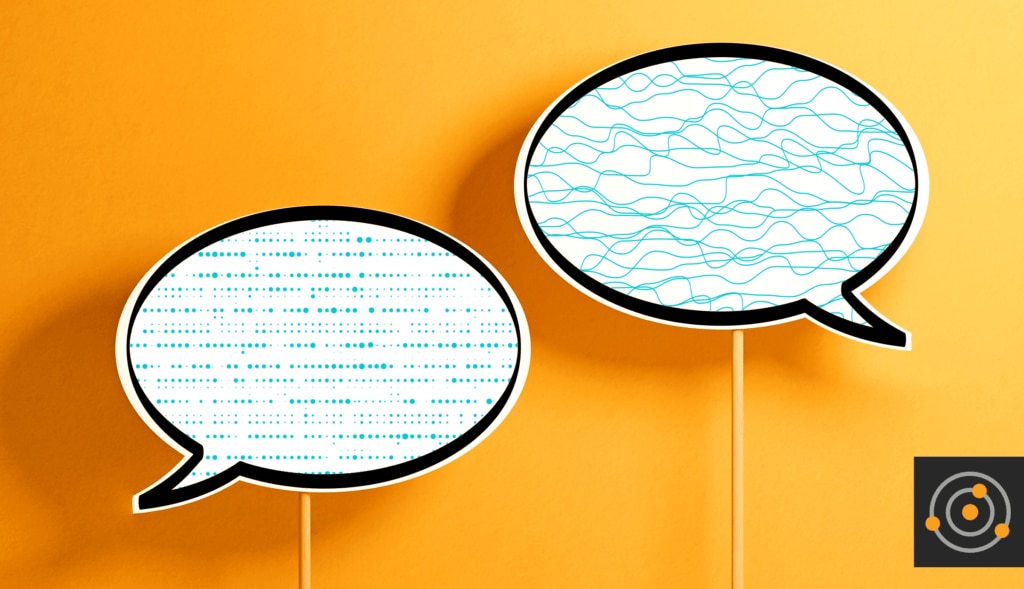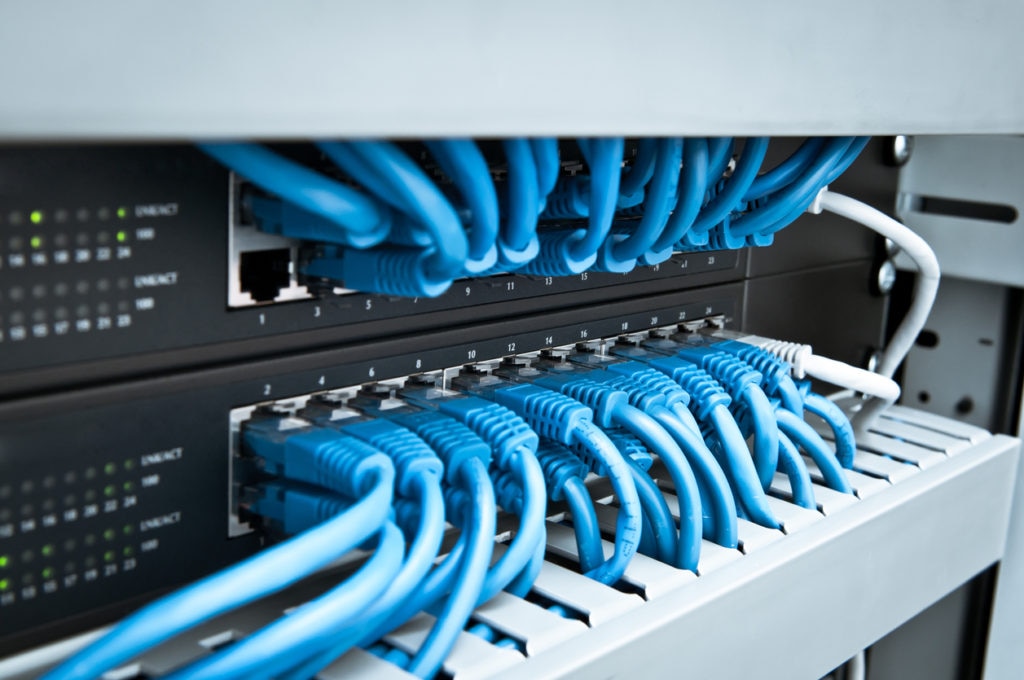Podcasting is, and has been, the rage for a while now. What electronic self-publishing tools did to open up and democratize written content, podcasts have done for the area previously controlled by radio stations.
Folks with a strong point of view and a desire to share it are often caught up short when it comes to the process of putting a podcast together. While this post will in no way cover every conceivable aspect of the podcast process, I want to share some of the things I’ve learned in being part of the
SolarWinds TechPod team, as well as a guest on other podcasts, and even putting my own together as a side hustle. I’ve broken down my thoughts into six phases: ideation, guest curation, production pipeline, pre-production, recording and editing, and publishing/promotion.
Ideas
While some podcasts bill themselves as being completely freeform, with no specific agenda, topic, or idea, very few GOOD ones are structured (or more accurately, UN-structured) like that. It takes a huge amount of skill, a broad base of knowledge, and—if the podcast is more than one person—a rock-solid chemistry between the hosts to pull that kind of thing off episode after episode. So, I’m just going to presume you’re not one of those types (because if you are, you stopped reading in the first paragraph and just started your podcast already). For the rest of us mere mortals, having a coherent and cohesive idea is the bedrock on which the rest of your podcast is built.
This goes for the overall show as well as individual episodes. No podcast can be all things to all people, and in the crowded space, it’s important for people to know what they’re going to get when they click. Nobody is going to stick around to listen for a few episodes to find out what you’re all about.
That’s not to say you must stick rigidly to a single and singular topic. What people listen to podcasts for most is YOU—the way you see and process the world around you and your opinions on the topic at hand. So, sharing something that affects you strongly, on topic or not, is fine. But the bulk of episodes and conversations should clearly relate to the podcast’s stated goal.
Within this structure, each episode should have a particular point. If you’re doing your job as the creative mind behind the show, ideas will be bigger than a single episode. You should expect (and accept) that you won’t be able to address all aspects of a topic in a single 15-30-minute (or longer) conversation. You will come back to certain conversations more than once. With that in mind, your conversation can and should be focused, detailed, and engaging.
Guests
Maybe your podcast will always and only feature you and one or more voices who are ever-present. But it’s far more likely you’ll need to bring in additional folks, either regularly or at least occasionally. Given that likelihood, I wanted to spend some time on it.
Eagerness
The first hurdle to having a guest on your podcast is getting them to say “yes” in the first place. Because you don’t have a reputation to lean on, you’ll need to earn trust and inspire excitement by finding that alchemical mixture of having a compelling story—one in which the guest themselves can see how they are central to the conversation; along with a solid production process; and dogged (but unoffensive) persistence.
To be perfectly honest, it’s not an easy thing to pull off. You’ll likely fail at it a whole mess of times before you get your first “OK.” The good news is that success breeds more “OKs” so keep at it. Also remember “no” rarely means “never.” It’s more often a shorthand way of saying “I’m not convinced” or “Not this time.” If there’s a person you really want on your podcast, keep coming back to them until you hit them up at just the right moment.
Schedule
The first hurdle is getting your guest to show up. Some show’s I’ve been on have been of the “Do you want to be on an episode? Yes? Cool, let’s do it NOW!” and we’re off to the races. However, my own experience as a podcast host has shown me very few guests are willing to dive straight into a record with no prep or preamble.
You and your other hosts are going to either be able to accommodate a very flexible range of times and days; or to plan far in advance. And in either case, be prepared to juggle a guest schedule that may change at least once, if not several times.
Technical Elements
CONGRATULATIONS! You’ve gotten your guest to agree to be on the podcast, and you’ve found a date that works for everyone involved. Then they jump on and you realize they’re speaking to the laptop microphone, which is getting echo from the laptop speakers, and it sounds like they’re in the third stall of a grade-school bathroom.
The last major element of getting your guest on the show is to get them onto the show sounding good.
I wish I had a one-size-fits-all solution for this. As a podcast guest, I’ve personally experienced everything from podcast hosts asking for a description of the hardware I’d be using and insisting I upgrade if it didn’t meet their requirements; to being asked to send a test audio file; to having to jump on a short “technical test” recording; to being sent a mobile podcasting rig complete with headphones, microphone, and green screen background.
Setting reasonable expectations goes a long way. Instead of aiming for studio-quality sound, focus on a level of quality that isn’t so bad it distracts from the conversation. Listeners will usually tolerate little tinny-ness, some background noises, and so on. They won’t stick around for long if the conversation is too loud, too soft, or too jittery.
At minimum, insist that all guests use earphones of some kind to separate what they’re hearing from what they’re saying. If you’ve got that covered, everything else is a matter of closing doors and windows and sitting a little closer to the microphone than people may be used to on a typical Zoom call.
Pipeline
Lots of podcasts kick off an amazing first episode and then... nothing. All the focus on getting the initial conversation launched left no room to record the second, or the third, or... anything. This is (in my opinion) a huge mistake for two reasons:
If your first podcast is amazing, people are going to naturally be eager for more. By not providing something in a reasonable timeframe (a week or so), you end up losing their attention and the moment you worked so hard to build.
On the other hand, if your first podcast was rough, having a better second attempt goes a long way to erasing the mistakes of the past.
In either case, as you’re working on getting episode one out the door, you need to also be working on episodes two through four. To be honest, my personal policy is not to release an episode unless and until there are three more behind it. This provides you with enough of a buffer that if an episode is held up in post-production, you are still pushing content out the door.
Pre-Production
Which takes us to the conversation about what kind of work needs to happen before you sit down to record. I don’t want to belabor this point, just as you shouldn’t belabor this part of the process. This is for a few reasons, not the least of which is the way I like to work may look nothing like your preferred methods. Instead, I’m going to go over a few high-level points and let you fill in the blanks.
Do you know what you’ll be talking about on this episode? Can you describe that topic in a few sentences? Whether or not you feel you need it to HAVE the conversation, you should still spend a few minutes creating a short abstract. If for no other reason than the podcast publishing platform (and your listeners) will appreciate having a description.
Take another moment to create a short bio for everyone who’ll be speaking—including links to social media, etc. This feeds directly to the next item:
If you plan to have show notes, make sure any of the links, recommendations, etc., are on there. People who are listening and engaged will want to look those things up and having show notes makes it easier. Plus, it gives you somewhere to put those speaker bios and social media links I mentioned in the previous point.
Are there specific sections, key points, or sub-topics you know you’ll need to address as part of the larger discussion? If so, you’ll be well served by at least writing them down (and sharing them with the other voices on the episode.). Those sections, or “beats” also provide a natural point during recording to stop, check in with everyone to make sure they all feel good about the conversation and flow, correct any points, and prepare to move forward.
Closely related to that, do any of the folks on the episode have specific stories, anecdotes, or quotes they want to make sure they get a chance to say/tell? If so, make sure they’re noted. Even more importantly, make sure EVERYONE knows those stories are coming. You want all the other guests to “make room” for the story during the flow of the conversation.
Recording and Editing
There are plenty of guides on how to actually DO the act of recording. What I want to point out here are some of the workflow and process elements you’ll need to be aware of during the record.
At the top of the list is to make sure you include transcripts in your production process. I know that’s a weird #1 item, but let me lay it out for you: first, SEO doesn’t work for audio. Having a transcript means every episode is searchable and therefore more likely to be found by people who aren’t already in your audience. Second, there are
430 million deaf and hard of hearing people in the world (
37.5 million in America alone) who aren’t going to listen to your podcast. But they’d be delighted to read it if they could. Add to that the thousands of people who have audial processing issues, those who aren’t fluent in your podcast’s primary language, and folks who simply want to consume your podcast but work in an environment where they can read but not listen, and NOT having transcripts equals missing out on thousands of potential audience members.
Next, remember to stop and check in with everyone frequently. Pausing and ensuring everyone feels good about the conversation doesn’t break the flow, it ensures the conversations stays good.
Closely tied to that is having a way to SEE the podcast participants. I’m not saying you should record video along with audio (far from it). But being able to see people’s expressions, when they have something to add, to even share a look or a silent laugh, will translate to the audio-only format of podcasts far more than you’d think.
If a sequence, or story, or segment doesn’t go as well as you’d hoped, stop and do it over. I know this can feel tedious. But the alternative is being stuck with a less-than-wonderful part of the episode. You’re better served in the long run by going back and taking a second swipe at it.
Along with that, settle on a catchphrase or word you’ll use when you’re going back and re-doing (or just stopping to clarify a point before continuing the record). On one podcast, everyone knows to preface their re-takes with a pause and the phrase “Edit Point.” This allows the person editing the audio later to be able to find and remove those spots.
Speaking (briefly) of editing, if possible, use a system where you get one audio track per speaker. I know that it seems complicated when you first start out, but the first time speaker #1’s dog starts barking in the middle of speaker #2’s incredible story, you’ll thank me.
Similarly, always have a backup recording option in your back pocket. Whether that’s having everyone download Audacity and record locally, or jumping on Zoom, or whatever, if your primary recording platform fails (and it will, no matter how many test runs you make) you’ll want to have another option available besides “ditching this record and trying again later.”
Publishing and Promotion
This last section is devoted to posting and promoting your precious podcast. Once again, I’m not going to get the specifics how to publish or promote because so much of it is specific to the platform you choose to use. These are going to be some broad guidelines and things you can do around the publishing and promotional mechanics.
While having a website seems redundant, since the podcast will have its own natural home on your publishing platform, I can’t emphasize enough how doing this even before you post episode one can help. First, it will serve as a central place to find old episodes when your listeners move from iTunes to Spotify to whatever the next thing is. No matter HOW they consume your episodes, they’ll always know WHERE to find them. A website will also give you a place to post those show notes and transcripts I mentioned earlier, as well as behind the scenes thoughts, polls, and surveys, “about the hosts” information, and more.
It may seem like promotion is just a matter of posting “Hey, new episode is up” on Twitter, Facebook, and LinkedIn and calling it a day, but if you do that (and only that), you’re going to be missed by a lot of potential audience members as your notification is lost in a sea of cute cat videos and uninformed hot takes from family members. Instead, set up a regular (and schedule-able) posting cadence where (for example) you post a “coming next week: <title>” on Monday; on Tuesday you post the episode; on Wednesday you post the show notes in the morning and an out-quote from that week’s episode in the afternoon; on Thursday you post an “ICYMI: <title>”; and on Friday you promote “coming next week:” along with the title or topic of the upcoming episode. You’re only posting one (or two) social media messages a day, but it creates a rhythm that becomes harder to overlook among the rest of the chatter of people’s social media feeds.
Finally (for both this section and this blog) watch your statistics. Note who’s listening, when they’re listening, whether they listen to the whole episode or only partway through, which platforms get the most clicks, and so on. Not only will it tell you where you might want to invest advertising dollars, it will also start to show you which conversations and topics resonated with your audience the most, and which fell flat. It’s up to you to use that data to decide whether you should work harder on the areas that are lacking (more adds on poorly performing sites; punching up topics that aren’t resonating) or drop those in favor of what’s working well.
The Mostly Un-Necessary Summary
If podcasting is something you’ve always thought about doing, but haven’t felt like you knew enough about to start, then I hope my contribution to this year’s International Podcast Day is to have inspired you to take the next step, to turn on your microphone, and to use your voice.





